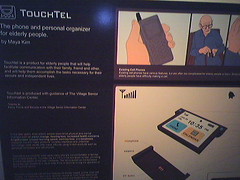Scanning the Internet-centered design mailing lists these days, I have to wonder if the inward-looking conversations aren’t doing more harm than good.
Earlier in my career, mailing lists and blogs were incredibly useful tools for learning my craft. The mass media hasn’t really covered the story of blogs as more than journals and citizen journalism. For those of us designing complex Internet systems there were (and are) tons of interesting problems to solve, and we wrote about them and shared invaluable information with each other, desperately trying to push the discipline fast enough to turn new ideas into functioning reality. It wasn’t just writing and reading, it was joint, remote problem solving among an entire community.
As I became more accomplished, I didn’t need quite as much of that communication to practice my discipline, the work become more about how to manage teams and help them ascend the learning curve. So these days I blog less frequently and mostly scan the mailing lists. And what I see concerns me. Some of our brightest minds are still having the defining the damn thing discussion, which we realized years ago was proving fruitless.
Perhaps just saying no to something seemingly pleasurable isn’t enough; we need compelling alternatives. So lately I’ve been thinking a lot about tools we use to do our work and tools we make to empower others. The difficulty of programming is a threshold that reduces designers to asking others for help, but we need to funnel our energy into creating tools to solve our problems and then move on to more interesting problems.
More on this in the coming months…


 About every third or fourth design student I meet has a concept for helping the elderly call for help from their homes. I just saw another one last night at the Parsons show. One might wonder why such devices aren’t widespread by now.
About every third or fourth design student I meet has a concept for helping the elderly call for help from their homes. I just saw another one last night at the Parsons show. One might wonder why such devices aren’t widespread by now.